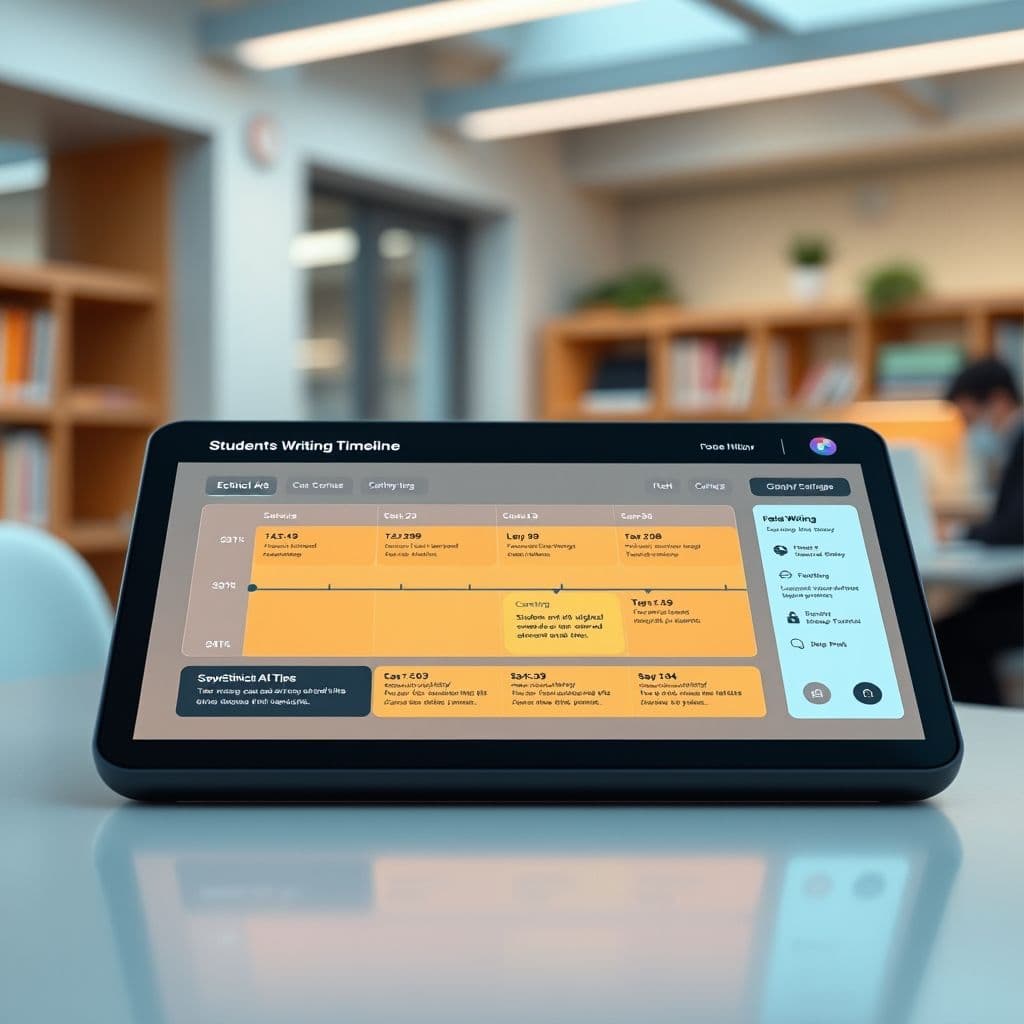The AI Essay Crisis: How Students Are Using ChatGPT and What Educators Can Do

The rise of AI tools like ChatGPT has created a new challenge for educators: students submitting AI-generated essays as their own work. This viral TikTok video shows a teacher confronting a student about an essay that was clearly written by AI, sparking debates about academic integrity, unfair grading, and how schools should adapt. But what if there was a better way?
The Problem: AI-Generated Essays and Academic Integrity
The video highlights a growing issue in education. Students are increasingly turning to AI tools to complete writing assignments, often without understanding the content they submit. The teacher notices unusual vocabulary (like 'egregious') and checks the document's version history, revealing the entire essay appeared in one minute. This scenario is becoming alarmingly common, as comments on the video show: 'We use it cause you teachers make our assignments so long' and 'Just let us pass.'
The core issues are: 1) Students bypassing learning by using AI, 2) Teachers struggling to detect AI content fairly, and 3) A disconnect between assignment design and modern tools. As one commenter noted, 'Why are yall defending chat GPT!! Imagine you're getting surgery in 20 years and your surgeon has to use chat gpt.'

A Potential SaaS Solution: Ethical AI Integration for Education
Instead of fighting AI use, what if educators had a specialized SaaS platform that helps integrate AI responsibly? This hypothetical tool could feature: 1) AI content verification with explainable detection (not just 'gotcha' flags), 2) Student-facing modules on ethical AI use with citation templates, 3) Assignment design tools that make AI collaboration productive rather than deceptive, and 4) Version history analytics to show the writing process.
Key differentiators would include educational focus (not just detection), transparency in how analyses are performed, and support for teaching proper AI collaboration skills—acknowledging that these tools are part of students' futures. As one TikTok comment suggested, 'That's why you ask chat GTP to write it in layman terms'—the platform could teach such strategic use cases.

Implementation Scenarios: From Detection to Education
Such a platform could serve multiple roles: 1) Early alerts when submissions contain likely AI content, with side-by-side comparisons to the student's past work, 2) 'Ethical AI badges' for assignments designed to leverage AI appropriately (e.g., 'Used ChatGPT for initial research, then wrote analysis independently'), and 3) Professional development modules helping teachers redesign assignments for the AI age—moving beyond essays vulnerable to automation.
The goal wouldn't be punishment, but creating systems where, as one commenter joked, 'God forbid someone use a thesaurus' isn't a red flag—but a teachable moment about tool appropriateness. The SaaS could provide the framework schools currently lack, turning AI from an academic integrity threat into a managed learning resource.
Conclusion
The viral teacher-student confrontation highlights an educational system unprepared for AI's prevalence. While detection tools exist, a comprehensive SaaS solution addressing ethical integration—not just policing—could transform this challenge into an opportunity. By supporting both educators and students in navigating AI responsibly, such a platform might prevent the all-too-common scenario of a copied essay appearing at 9:01 PM.
Frequently Asked Questions
- How accurate are current AI detection tools for student essays?
- Most tools have significant limitations, often flagging strong student writing or missing sophisticated AI content. A dedicated educational SaaS would need higher accuracy and explainable results to be fair and actionable.
- Wouldn't this SaaS just teach students how to cheat better?
- The focus would be on ethical collaboration—like teaching when AI use is appropriate (e.g., brainstorming) versus dishonest (e.g., submitting unedited AI text). It's about preparing students for real-world AI use, not gaming school systems.
- What's the first feature such a platform should include?
- A 'writing process dashboard' showing how drafts evolved would address the core issue in the TikTok—sudden, unexplained content insertion—while respecting privacy and supporting learning over punishment.


